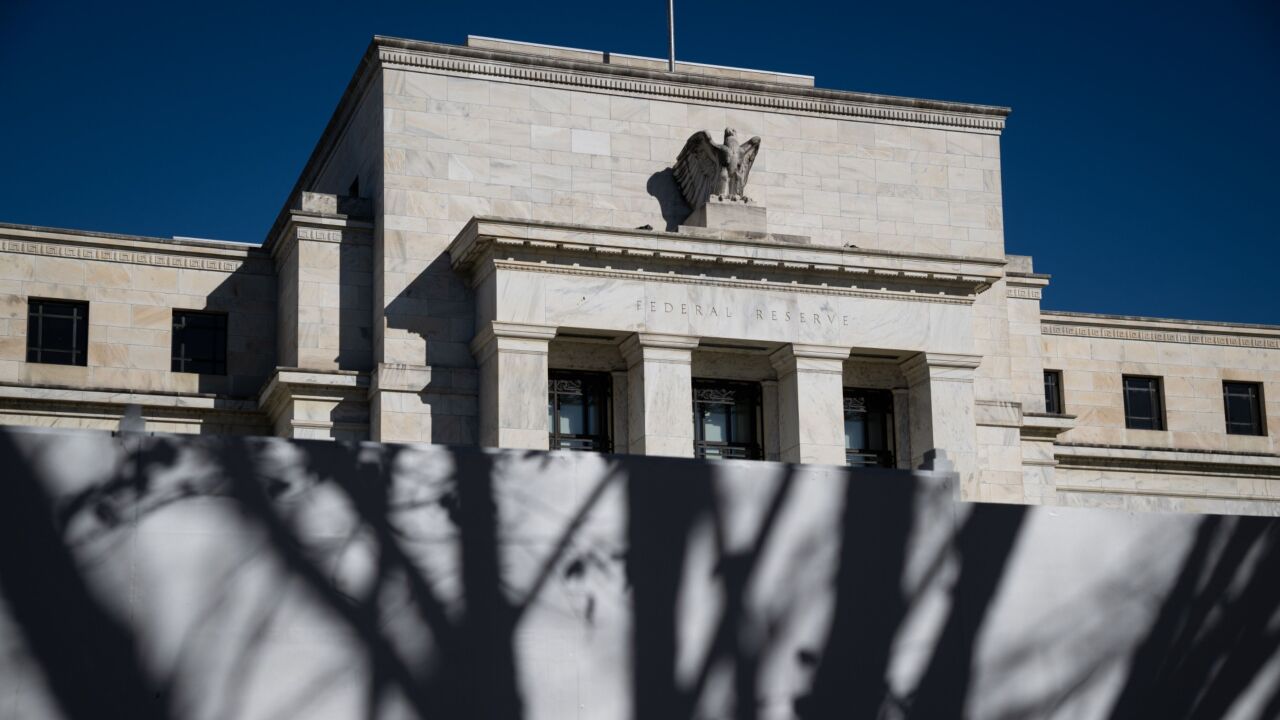Even in the early stages of Enron Corp.s collapse, financial services institutions faced a balancing act between two major considerations, financial risks and customer relationships.
Of course, banks confront that balancing act all the time, on a smaller scale. For relationship purposes, clients will sometimes express a strong preference that their loans remain on the books of their primary bank which in turn may well already be carrying as much risk as it wants.
That may explain why sellers of credit derivatives are looking to the Enron case as their chance to show that a product just a few years old has already matured sufficiently to smooth out some of the systemic stresses that might otherwise have accompanied such a major bankruptcy.
James Vore, a vice president in Morgan Stanley Dean Witter & Co.s credit derivatives department, said that since 1999, when the credit derivatives market began trading on standardized definitions, market participants have had plenty of opportunities to find ways to make the contracts involved as watertight and unambiguous as possible.
Over the past three years there have been a number of credit events in which credit derivatives were outstanding Conseco Inc., Finova Group Inc., Railtrack Group PLC, and Southern California Edison that have tested the contract, Mr. Vore said. As a result, gray areas such as what constitutes a default and what constitutes bankruptcy have been clarified, he said.
Through a credit default swap the markets fundamental product a holder of a loan pays a premium to a seller of protection, typically over a five-year period, as a way to unload risk. Should a credit event like a bankruptcy occur during that time, the protection seller pays the buyer the full value of the loans, which are then put on the sellers books.
Even after syndication, banks are left with a lot of unwanted credit risk on their portfolios, said Michael Pohly, a principal at the Morgan Stanley group. Given the economic environment and some of the losses weve seen in the credit markets, the amount of tolerance banks have for credit risk has also shrunk.
Some bankers say they remain skeptical of the value of credit derivatives, and some fairly large banking companies, for a variety of reasons, do not use them at all.
For example, the $70 billion-asset BB&T Corp. of Winston-Salem, N.C., does not use derivatives to hedge credit risk. According W. Kendall Chalk, BB&Ts chief credit officer, the company has not delved into the credit derivatives market because its loans are not large enough to make such a move necessary, and also because the market is so new.
On the other hand, BB&T uses hedging techniques to manage interest rate risk, he said.
But in part because of the increased use of products like credit derivatives, and in part because of a better-developed syndication market, analysts say there is reason to believe that the collapse of Enron, the largest company in U.S. history to file for bankruptcy, will not necessarily be the worst credit default ever to hit banks books.
In a testimony to the efficiency of the global financial system, that exposure [in excess of $33 billion] is not concentrated in any one institution, country, or even industry, wrote Tanya Azarchs, a managing director at Standard & Poors, in a recent report.
Most of the large banking companies that are active in the credit derivatives market have exposure to Enron, and they would not comment on the topic of Enron-related credit derivatives. But in just the first half of this year, the global notional outstanding volume of credit derivative transactions totaled $631.5 billion, according to the International Swaps and Derivatives Association.
One factor that helps credit derivatives remain attractive from the client-relationship standpoint is the fact that a derivative transaction offers a cloak for the banks actions that a loan sale does not.
The use of credit derivatives allows banks to strengthen their relationships with their clients, said Peter F. Hamilton, a managing director in the credit derivatives department at Morgan Stanley. For example, instead of selling loans to reduce its exposure to a client, a bank can use credit derivatives to disperse part of its credit risk to a client and therefore allow it to participate in any additional lending needs the client may have.
Since there are increasing calls for more regulation and disclosure regarding derivatives positions, that anonymity may prove elusive in the future, but time may lessen the intensity of those calls.
Disclosure requirements ought to be rethought, in light of what we can learn from this, but thats not what got Enron in trouble, Ms. Azarchs said in an interview.





